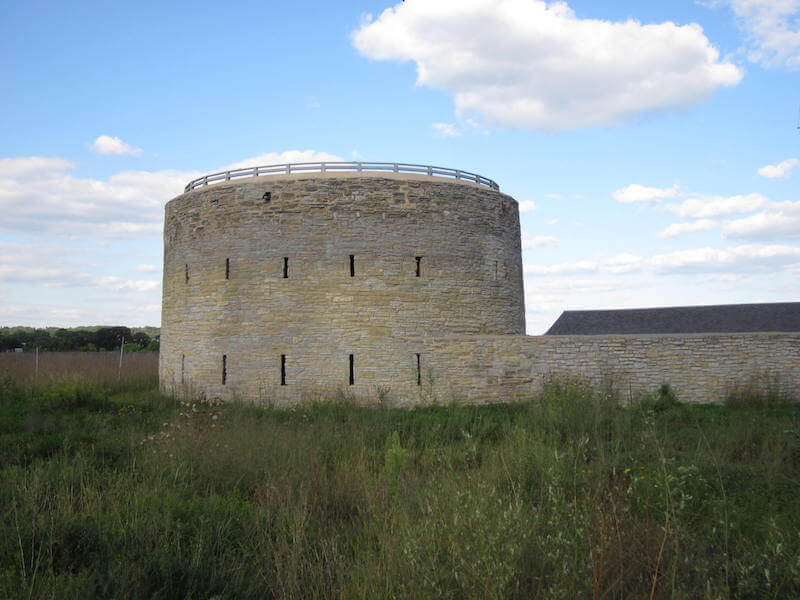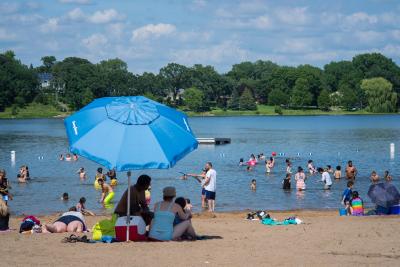Posted by Realtor David Olson 952.314.9446
City of St. Paul: A Brief History
Overview of History of St. Paul
Saint Paul is the second biggest city in the state of Minnesota, the county head for Ramsey County, and home of the state capitol. The source and evolution of the city’s growth was a result of Fort Snelling, the first main United States military presence in the state, and because of its position along the Upper Mississippi River, it became a popular spot to settle.
Fort Snelling, initially known as Fort Saint Anthony, was first founded in 1819, at the convergence of the Mississippi and Minnesota rivers, and was established in order to promote American governance over the fur-trading industry on the rivers. As the whiskey trade started to prosper, the military officers in Fort Snelling made an effort to forbid it. An 1837 treaty with the natives secured the area for white settlement. In 1841, the settlement was named Saint-Paul by Father Lucien Galtier, who was a priest from France, in honor of Paul the Apostle. By the early 1840’s the settlement had become a significant trading center, a resting stop for settlers heading west, and was recognized regionally as Pig’s Eye or Pig’s Eye Landing. The Minnesota Territory was ratified in 1849 with Saint Paul named as its capital. In 1854, Saint Paul incorporated as a city and in 1858, Minnesota was acknowledged to the union as one of the states.
promote American governance over the fur-trading industry on the rivers. As the whiskey trade started to prosper, the military officers in Fort Snelling made an effort to forbid it. An 1837 treaty with the natives secured the area for white settlement. In 1841, the settlement was named Saint-Paul by Father Lucien Galtier, who was a priest from France, in honor of Paul the Apostle. By the early 1840’s the settlement had become a significant trading center, a resting stop for settlers heading west, and was recognized regionally as Pig’s Eye or Pig’s Eye Landing. The Minnesota Territory was ratified in 1849 with Saint Paul named as its capital. In 1854, Saint Paul incorporated as a city and in 1858, Minnesota was acknowledged to the union as one of the states.
Unique topography played a role in the settlement and expansion of Saint Paul as a trade and transportation center. The Mississippi River valley is outlined by a series of stone bluffs that line each side of the river. Saint Paul concentrated around Lambert’s Landing, the last place to unload boats coming upriver at a clear entrance point, and later became Mill City. This made Saint Paul a gateway to the Upper Midwest for westbound settlers heading for the Minnesota frontier or the Dakota’s. In 1858 more than 1,000 steamboats unloaded products and passengers at Saint Paul. Soon, infrastructure was established, and the main option was that of railroads. For well over a century, Saint Paul was a frontier town and a railroad town.
stone bluffs that line each side of the river. Saint Paul concentrated around Lambert’s Landing, the last place to unload boats coming upriver at a clear entrance point, and later became Mill City. This made Saint Paul a gateway to the Upper Midwest for westbound settlers heading for the Minnesota frontier or the Dakota’s. In 1858 more than 1,000 steamboats unloaded products and passengers at Saint Paul. Soon, infrastructure was established, and the main option was that of railroads. For well over a century, Saint Paul was a frontier town and a railroad town.
Currently, it is more influenced by business and its function as the state capitol. The people have defined the flavor of the city. Today, it consists of 17 unique neighborhoods and is often described as “the most livable city”.
people have defined the flavor of the city. Today, it consists of 17 unique neighborhoods and is often described as “the most livable city”.
If you have any questions regarding the city of St. Paul, Minnesota, it’s parks, schools, history, or amenities OR if you would like to sell or buy a house in the St. Paul area, please feel free to visit www.DavidOlsonRealEstate.com or text/call Realtor David Olson @ 952.314.9446 or email: [email protected].
City of St. Paul: Schools & District 625
City of St. Paul: Community Life
Related City Articles










































